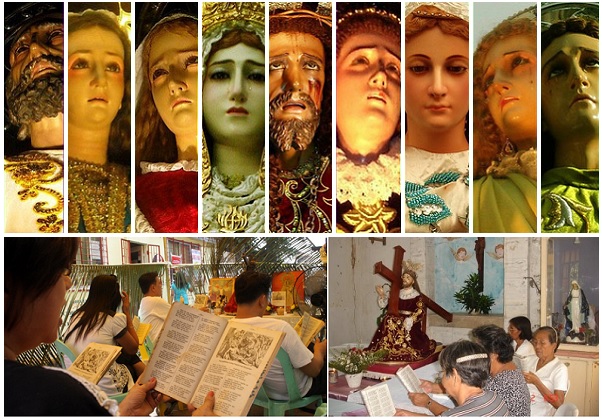
In the Philippines and in all other Catholic countries in the world, Ash Wednesday officially ushers the start of the Lenten Season, a yearly observance by the Catholic Church to commemorate the passion and death of Jesus Christ. As taught in most Catholic schools throughout the country, Lent is a 40-day period of prayer and fasting; of penance, conversion, and reconciliation. And while the way of observing Lent varies from region to region, the objective remains constant everywhere – and that is to recall the greatest sacrifice done by Jesus Christ to save humankind, by dying on the cross.
Some provinces managed to maintain and continue practicing long-time traditions and practices passed on to us by the Spanish friars. There are places in the Philippines, where “pabasa” (reading/singing of the Passion of Christ), “senakulo” (passion play), or “penitensya” (flagellation) are still being done, observed and practiced.
 “Senakulo” is a street play where scenes and events before the crucifixion are enacted by local theater groups or organizations, aimed at creating awareness about the Passion of Christ. These are held in town plazas or in the streets. “Pabasa” is the daily reading of a book called “Pasyon”, where instead of just simply reading the lines, a melody is attached to the verses as one group of elders sing a verse, and another group of elders will sing the next verse. “Penitensya” is the ritual of carrying the cross for long distances, crawling on rough pavements or whipping their backs to draw blood, as a sign of repentance and asking for God’s forgiveness for the sins committed.
“Senakulo” is a street play where scenes and events before the crucifixion are enacted by local theater groups or organizations, aimed at creating awareness about the Passion of Christ. These are held in town plazas or in the streets. “Pabasa” is the daily reading of a book called “Pasyon”, where instead of just simply reading the lines, a melody is attached to the verses as one group of elders sing a verse, and another group of elders will sing the next verse. “Penitensya” is the ritual of carrying the cross for long distances, crawling on rough pavements or whipping their backs to draw blood, as a sign of repentance and asking for God’s forgiveness for the sins committed.
One place in the Philippines that has gained popularity and prominence among Catholics observing Lent including the curious onlookers is San Pedro Cutud, in San Fernando City in Pampanga, one of the provinces in Region 3 in Luzon. San Pedro Cutud has become known for its Good Friday reenactment of the Passion and Death of Jesus Christ. According to the older people in this small town, this practice has been observed by the Catholics in San Pedro Cutud for the past 50 years or so.
Every Good Friday each year, flagellants or penitents, wearing black or maroon hoods, walk several kilometers in procession from different parts of the country, as they whip themselves with bamboo sticks tied to a rope or rods with sharp edges that cut through the skin or carrying the cross. They will all gather in a rice field in San Pedro Cutud where a two-hour street play called Via Crucis (a passion play) will be held, culminating with the volunteer flagellants being nailed to the wooden cross atop the makeshift Calvary, for several hours. The nailed penitents are taken down when they feel cleansed of their sin.
The reasons, motivations and intentions may vary depending on the person performing the crucifixion ritual or act. Some believe that by having themselves nailed like what was done to Jesus, they would receive the forgiveness for their sins. To others, it’s their own way of showing their faith, atonement and self-sacrifice.
While the Catholic Church does not endorse this practice, for the people of San Pedro Cutud, the fervor for the tradition remains deeply rooted in their faith. The practice has become their “panata” or vow, and it continues to be a source of solidarity and strength among the people in the small community of San Pedro Cutud.







